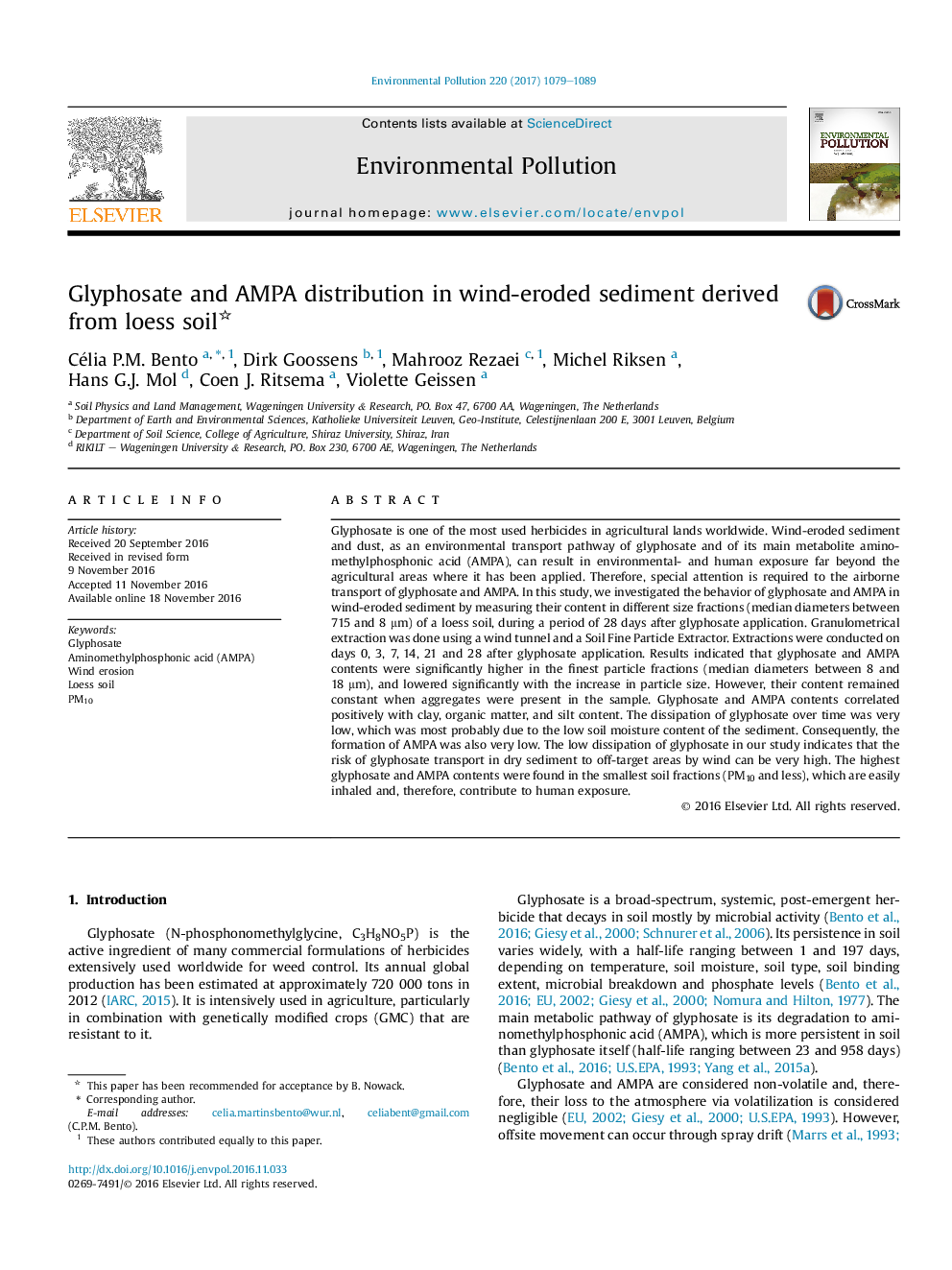| کد مقاله | کد نشریه | سال انتشار | مقاله انگلیسی | نسخه تمام متن |
|---|---|---|---|---|
| 5749538 | 1619153 | 2017 | 11 صفحه PDF | دانلود رایگان |
- Glyphosate & AMPA contents in different size fractions of wind-eroded sediment were studied.
- Glyphosate & AMPA were highly concentrated in soil particles <10 μm (PM10).
- Glyphosate & AMPA contents lowered with increasing particle size.
- Low soil moisture content inhibits glyphosate decay and increases its airborne transport risk.
- The risk of off-site airborne transport of glyphosate & AMPA with dust is very high.
Glyphosate is one of the most used herbicides in agricultural lands worldwide. Wind-eroded sediment and dust, as an environmental transport pathway of glyphosate and of its main metabolite aminomethylphosphonic acid (AMPA), can result in environmental- and human exposure far beyond the agricultural areas where it has been applied. Therefore, special attention is required to the airborne transport of glyphosate and AMPA. In this study, we investigated the behavior of glyphosate and AMPA in wind-eroded sediment by measuring their content in different size fractions (median diameters between 715 and 8 μm) of a loess soil, during a period of 28 days after glyphosate application. Granulometrical extraction was done using a wind tunnel and a Soil Fine Particle Extractor. Extractions were conducted on days 0, 3, 7, 14, 21 and 28 after glyphosate application. Results indicated that glyphosate and AMPA contents were significantly higher in the finest particle fractions (median diameters between 8 and 18 μm), and lowered significantly with the increase in particle size. However, their content remained constant when aggregates were present in the sample. Glyphosate and AMPA contents correlated positively with clay, organic matter, and silt content. The dissipation of glyphosate over time was very low, which was most probably due to the low soil moisture content of the sediment. Consequently, the formation of AMPA was also very low. The low dissipation of glyphosate in our study indicates that the risk of glyphosate transport in dry sediment to off-target areas by wind can be very high. The highest glyphosate and AMPA contents were found in the smallest soil fractions (PM10 and less), which are easily inhaled and, therefore, contribute to human exposure.
285
Journal: Environmental Pollution - Volume 220, Part B, January 2017, Pages 1079-1089
